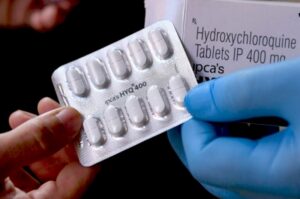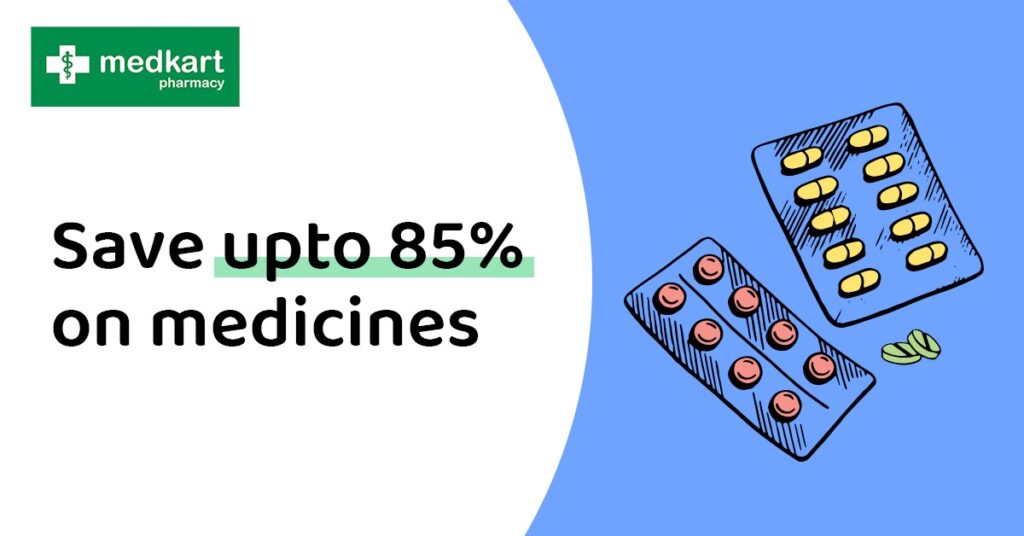Last updated on December 14th, 2024 at 05:25 pm

Many generic pharmaceuticals are produced in India and sent to other countries. The Indian pharmaceutical industry is catering to 5% of all medication in the United Kingdom and 40% of all generic drug demand in the United States. now let’s know about Generic Medicines in India: Lack of Popularity and the Road Ahead.
A doctor may prescribe medicine by its brand name or its generic name. The brand name of a drug is the name given to it by the medicine’s developer who holds the patent. The generic name is a different label for the same medication content.
What is generic medicine in India?
The World Health Organization (WHO) defines generic drugs as pharmaceutical products used in place of the originator brand product (that holds a patent). Such medicines require no license from the patent holder to manufacture and market the medicines once the patent expires.
Post the patent expiry, other generic medicine companies may produce and market the same medicine under an international nonproprietary name — often at a lower price. This generic drug overcame the cost barrier associated with patenting costs. Moreover, Indian law enforces prescribing generic medicines to physicians and pharmacists to sell the same.
Generic Medicines vs Branded
Lack of branding is one of the key reasons why generic medicines are not famous in India. Brand names matter in India — retail goods, electronics, groceries, and consumer durables. And even in the generic drug business, brand names still hold the major sales. On the other hand, branded medicines are leveraging their power of branding through different industry channels and advertisements to create an image that branded medicines have better quality successfully.
Unfortunately, people fall prey to such agendas and prefer branded medicines only to pay premiums for no reason. Some drug brands have a well-known association with their treatments. The brand names have grown to mean the same thing as drugs. Dolo is a fever-reducing medicine in India, but its primary content is paracetamol. Here, people would ask for Dolo and not paracetamol or fever-reducing medicines.
Importance of Generic Medicines
People need to become more familiar with generic drugs because pharmaceutical companies are using the power of branding to create an unnecessary divide between branded and generic medicines. The branded drugs are marketed to physicians in a manner that creates a wrong perception that branded medicines are better. It also incentivizes the medical lobby — drug stores, private hospitals, local clinics, etc., by offering a share of the sale.
If patients are prescribed branded medicines by certain physicians or hospitals and buy them from a nearby store, the doctor gets the margin from every sale. Therefore, doctors’ endorsement of generic alternatives to brand-name drugs is crucial to increasing their usage. The health ministry has required all doctors nationwide to use generic medicine names.

Indian Government Initiatives for Promoting Generics
The Indian government launched the “Jan Aushadhi” initiative in 2008 under the Department of Pharmaceuticals. This initiative aimed to establish government-supported retail stores to sell generic versions of high-quality medicines. It successfully established Jan Aushadhi outlets, where pharmacy stores only offer generic brand medicines.
This program aims to enhance people’s quality of life by lowering medical expenses. It offers high-quality generic medications at lower prices. It also spreads information about the effectiveness of generic medicines amongst physicians who prescribe more generic drugs. The Bureau of Pharma Sector Undertakings (BPSU) acts as the implementing agency, assisted by Central Pharma Public Sector Undertakings (CPSUs) and Janush Aushadhi.
In an amendment to the code of conduct for doctors made in October 2016, the Medical Council of India recommended that all doctors prescribe drugs with clearly legible generic names. And they would do so in a way that encourages generics. The Indian government is mulling and considering whether to enact legislation requiring generic drugs in patient care.
Common challenges to overcome
The lack of strong regulatory criteria for the amount of medicine in its generic counterpart and its allowable contents has been a major factor for physicians’ (and patients’) In contrast to their cheaper generic counterparts, branded generic medications command a higher price at retail pharmacies. On the other hand, it’s important to know that generic versions of popular brand-name pharmaceuticals work just as well. Research, processing, and production all affect the final product’s quality.
As long as the manufacturers follow precautions to ensure product quality, these generic pharmaceuticals are just as effective in treating patients as the branded treatment. By strictly adhering to GMP norms, pharmaceutical manufacturers may become more accessible to the average person financially. Pharmaceutical equivalent reference products must be therapeutically equivalent to the standard reference product through bioequivalence studies as mandated by regulatory bodies.
In vitro dissolution studies are useful for demonstrating drug-product equivalence in some cases. The lack of strong regulatory criteria for the amount of medicine in its generic counterpart and its allowable contents has been a major factor for physicians’ (and patients’) lack of faith in generic pharmaceuticals.
Possible Solution in Generic Medicine in India
There are 4 Es that help promote effective generic utilization: education, engineering, economics, and enforcement.
Education: This involves creating initiatives that help spread information about generic prescribing to have an impact. Mostly, this is done by leveraging media publications.
Engineering: Prioritizing production measures to drive medication, quality of production, and with supply agreements. This ensures quality production and wider reach.
Economics: This is done by providing positive and negative incentives to physicians and patients. Customers will be saving costs and be shown how physicians benefit from prescribing branded medicines.
Enforcement: It involves keeping regulations in place of law enforcement, which may include obligatory generic substitution regulations that pharmacists and manufacturers must follow.
Is Generic Medicine Safe?
Quality assurance by the government for any form of pharmaceutical manufacturing is essential. Many international agencies are accusing India of producing low-quality medicines that lead to the death of children in Gambia. The Drugs Technical Advisory Board (DTAB) has proposed implementing barcodes or QR codes for 300 brands of drug products sold in India. The barcode information will include UPC, the name of the active pharmaceutical ingredient (API), the brand name (if any) along with the following:
- Manufacturer’s name and address
- Serial shipping container code
- Batch number & size
- Manufacturing date
- Expiry date
- Manufacturing licence or the import license number
- Any necessary storage instructions.
Who Started Generic Medicines in India?
Eradicating unawareness around generic medicines also requires well-designed survey studies that consider patients, community pharmacists, and physicians. Usually, generic medicines are perceived as drugs created for the low-income group. Many high-income groups often consider generic medicines a substandard product made for the marginal and poor. And this social perspective needs to be added across government communication. Therefore, future advertisements and communications should also target such groups, goal should be to infer a general picture relevant to generic drug prescribing and buying attitudes.
This includes the role of Janaushadi in increasing the reach of generic medicines to penetrate deeper into the rural market. Even those who can afford medicines in such a market are deprived of them because they lack access to medicines. Therefore, Jan Aushadi stores leverage information technology that enables an end-to-end supply chain system with a Point-of-Sale (PoS) application.
This helps determine the stock and expected availability of products so that people can avoid visiting bigger cities to get medicines. Such an approach includes building a stronger system comprising warehouse management, multiple distributors strategically placed around the nation, and replacing expired medicines.
Next, healthcare providers and government officials must provide drug costs at reasonable levels. An essential instrument in the fight against rising healthcare costs is the introduction of generic equivalents. More and more patents are expiring, and the market for generic copies of pharmaceuticals is projected to continue to see rising sales.
Are Generic Medicines Effective in India
The Pharmaceutical and Medical Devices Bureau of India (PMBI) is responsible for implementing government schemes and promoting generic medicines through a wide range of media. It includes running TV ads, banners on auto rickshaws, FM radio and cinema halls ads, flex banners on railway stations and state transport bus stands, etc. PMBI routinely informs the public how to best use Jan Aushadhi generic drugs through sites like Facebook, Twitter, Instagram, YouTube, and others.
The Bureau also organizes seminars and workshops to spread awareness about the scheme. Moreover, the 7th of March is celebrated as Jan Aushadhi Diwas to create awareness about the program.
There needs to be more understanding between drugstore employees and community pharmacists. Bridging such a gap help promote generic medications amongst everyone, even in tier-I and metro cities. A better understanding of generic drugs amongst customers is crucial for replacing branded drugs. Moreover, recent government interventions, as mentioned above, are boosting the distribution of generic drugs. There are more than 8500 JAS in India across multiple states. Also, the government is targeting 10,500 such stores by 2023.
The time has come to redefine how customers buy medicines in India, how they are distributed, and how physicians prescribe those. When treating the underlying cause of the disease, the original content prescribed to patients is equally effective, regardless of whether they are branded or generic. Since generic drug products greatly impact healthcare costs, medical professionals and patients need a thorough education.
Conclusion:
Government health authorities can also incentivize purchases by introducing loyalty discounts on generics. At Medkart, we drive awareness around generics through in-store walk-ins, marketing, and other efforts. We also encourage customers to switch to generic alternatives and save expenses by ordering generic medicine online in India.

You can compare and order medicines on Medkart.in by uploading a prescription. Alternatively, you can also download the Medkart app from Google Play Store or Apple App Store to order medicines from mobile in India. For more, you can walk into any of Medkart’s 107 generic medicine stores in India and get detailed information about generic medicines. If you are searching for a generic store, head to Medkart and make an informed decision that saves more.
Related Links: